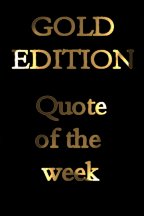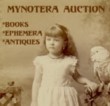|
|
|


|
|

|
|
by Craig Stark
#133, 6 April 2009
|
|
Buying and Selling Catalogs
Part II: Auction Catalogs
Issue #57
There may be a more profitable bookselling niche than catalogs, but I can't think of one. Not only are catalogs everywhere, but also, for every conceivable collected item that has ever been manufactured and sold, there most likely was a catalog published that featured it - and often it was the catalog itself that got it sold. And catalogs, no matter when they were published, continue to get things sold in the sense that they function as a resource for collectors, providing prices, illustrations, descriptions, dates and other information that assist in the collecting game.
But it's not only collectors who purchase catalogs. Like books, some catalogs are purchased to read, even if it's just to leaf through them. When I was a boy, I remember catalogs arriving by the dozens in the mail. My father would spend hours looking through them and rarely purchase anything. It was years before I understood why: For him it wasn't a matter of looking for things he needed to buy but more of a need to look at things he wished he needed to buy - or wished he needed period. (Think about this for a moment.) It's no accident that Sears Christmas catalogs are called Wish Books. Sometimes wishing is the only wished-for outcome. And, speaking of Wish Books, many of these are purchased by non-collectors who - here's another reason why catalogs are sought after - simply want to reminisce about their childhoods. Oh - and did I ever catch the catalog bug when I was in college! Remember the Whole Earth catalogs? They made for fascinating reading whether or not you had any intention of purchasing the products. The book reviews were especially informative. And guess what's become moderately collectible now?
Catalogs are also purchased by non-collectors for the information they contain. Example: A contractor specializing in the reproduction or restoration of, say, early 20th-century kit homes (staying on the Sears theme), would likely have great interest in acquiring early catalogs with illustrations and specifications of kit home architectural detail. Another example: As more and more buildings are restored, there's an unusually high interest in catalogs featuring products that contain asbestos. More about this in Part II.
Whatever the reasons are for buying catalogs, this is one niche where a bookseller can accomplish a lot simply by using his or her instincts. Most of us who have experience selling books have developed at least a working understanding of collector mentality; and many of us are now at an age when we also implicitly understand the allure of nostalgia - what rocks, what doesn't, and why. So many, many catalogs, especially vintage examples, play into these things and are readily identified as having value. But, like any other niche, there are surprises as well, high spots that aren't always intuitive - and of course it also helps to know when to pick up that Wish Book and when to leave it on the table.
So, the purpose of this and following issues is to provide some of non-intuitive know-how that will enhance buying and selling in this niche. It'd be nice if catalogs were more amenable to organizing into intuitive categories, but given their endless variety, we'll have to be content looking at a few of the more important sub-niches in detail and compiling a list of topics that catalog hunters should pay special attention to. In this issue I'll look at general merchandise catalogs.
Purchase this issue of the Gold Edition
here.
|
|







|
|
|


